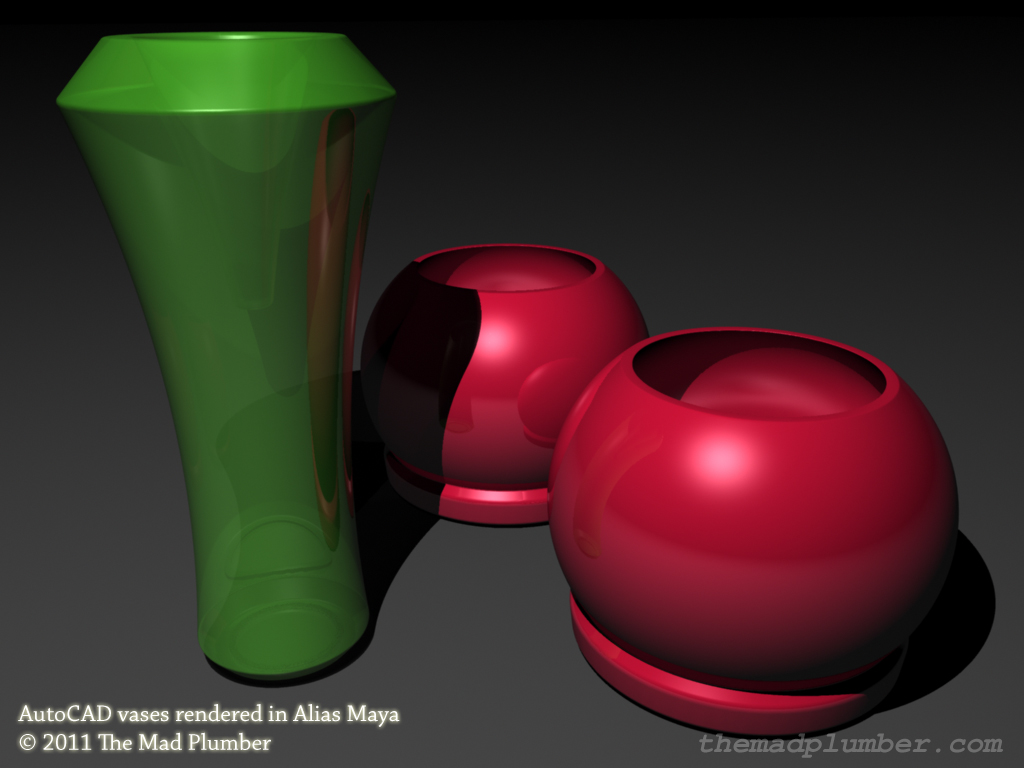
Thank you very much for visiting. Advanced criticism and professional advice are strongly encourage.
In preparation for future projects and existing projects due for new editions, I am testing the ability to import AutoCAD solid models into Alias Maya for rendering purposes. The graphic you see for this submission features two varieties of vases that I had modeled in AutoCAD. The models were exported as STL lithography files and imported into Maya.
The reason I am employing Maya for model rendering stems from my realization that AutoCAD is simply not the most optimal software to execute renders through. While AutoCAD is capable of producing renderings of a certain quality, these renderings easily pale in comparison to renderings produced through far more dedicated graphics programs such as Alias Maya. Furthermore, I found myself severely disappointed and frustrated when I had rendered a recent complex project and found severe glitches occurring in the output renders. Rendering in perspective is something that AutoCAD does not perform well and it would seem that there is a crippling threshold that hinders the rendering of complex models. Thus, I've opted that I will employ Maya for the purposes of producing raster image renders of my AutoCAD solid model projects.
The first hurdle to get past is importing an AutoCAD solid model into Alias Maya. Through much trial and error, I figured out the best way to do this is to export a solid piece of geometry as an STL lithography file and import that file into Maya. Please note that, for whatever reason, the geometry that you are exporting as an STL file must exist only in the positive range of AutoCAD space. Also, an STL file can only support a single piece of solid geometry; this might yield a lot of tedious work if your model is composed of multiple pieces of geometry.
After the model has been imported, reorient it as to how you wish it to exist in Maya space; you might be a little annoyed that the XYZ orientation might not be how you would expect it. A further issue to address is the appearance of the model. Despite having started as a smooth solid model in AutoCAD, you might be upset at its rigid appearance in Maya. This is easily remedied by softening the normals of the model. Now, your model will render with a sleek and smooth appearance.
I'm pretty pleased with the appearance and qualities of the renders that I have achieved with Maya. However, I had to note one qualm about this series of renders. If you look closely at the reflections of the vases in the image, you will detect a very notable flaw: vases in the reflections don't cast shadows. However, I have found that this issue can be resolved by beefing up the ray depth of my light source. The consequence of this, though, is a severe increase in rendering time.
The vases used in this Maya scene were modeled in AutoCAD for the purposes of being used as stock scenery in other projects. I am pretty pleased with the results of my experiments and am more comfortable about my future solid model projects in AutoCAD.
Again, thank you for the visit and have a safe and wonderful day.
PROJECT #358
In preparation for future projects and existing projects due for new editions, I am testing the ability to import AutoCAD solid models into Alias Maya for rendering purposes. The graphic you see for this submission features two varieties of vases that I had modeled in AutoCAD. The models were exported as STL lithography files and imported into Maya.
The reason I am employing Maya for model rendering stems from my realization that AutoCAD is simply not the most optimal software to execute renders through. While AutoCAD is capable of producing renderings of a certain quality, these renderings easily pale in comparison to renderings produced through far more dedicated graphics programs such as Alias Maya. Furthermore, I found myself severely disappointed and frustrated when I had rendered a recent complex project and found severe glitches occurring in the output renders. Rendering in perspective is something that AutoCAD does not perform well and it would seem that there is a crippling threshold that hinders the rendering of complex models. Thus, I've opted that I will employ Maya for the purposes of producing raster image renders of my AutoCAD solid model projects.
The first hurdle to get past is importing an AutoCAD solid model into Alias Maya. Through much trial and error, I figured out the best way to do this is to export a solid piece of geometry as an STL lithography file and import that file into Maya. Please note that, for whatever reason, the geometry that you are exporting as an STL file must exist only in the positive range of AutoCAD space. Also, an STL file can only support a single piece of solid geometry; this might yield a lot of tedious work if your model is composed of multiple pieces of geometry.
After the model has been imported, reorient it as to how you wish it to exist in Maya space; you might be a little annoyed that the XYZ orientation might not be how you would expect it. A further issue to address is the appearance of the model. Despite having started as a smooth solid model in AutoCAD, you might be upset at its rigid appearance in Maya. This is easily remedied by softening the normals of the model. Now, your model will render with a sleek and smooth appearance.
I'm pretty pleased with the appearance and qualities of the renders that I have achieved with Maya. However, I had to note one qualm about this series of renders. If you look closely at the reflections of the vases in the image, you will detect a very notable flaw: vases in the reflections don't cast shadows. However, I have found that this issue can be resolved by beefing up the ray depth of my light source. The consequence of this, though, is a severe increase in rendering time.
The vases used in this Maya scene were modeled in AutoCAD for the purposes of being used as stock scenery in other projects. I am pretty pleased with the results of my experiments and am more comfortable about my future solid model projects in AutoCAD.
Again, thank you for the visit and have a safe and wonderful day.
PROJECT #358
Category Artwork (Digital) / Scenery
Species Unspecified / Any
Gender Other / Not Specified
Size 1024 x 768px
File Size 226.1 kB
You know, I was about to say that Mental Ray was not available on my edition of Maya. However, that was because I had neglected to fully examine the plug-ins I had available that didn't load automatically. So, indeed Mental Ray rendering is available to me. I am working on another stock model in Maya and I may very well test Mental Ray's capabilities on it.
I very much appreciate your criticism as well as recommending the use of Mental Ray. Thanks for visiting!
I very much appreciate your criticism as well as recommending the use of Mental Ray. Thanks for visiting!

 FA+
FA+
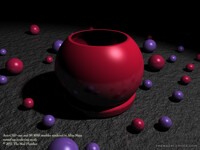
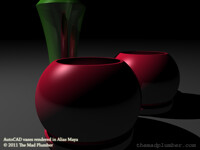
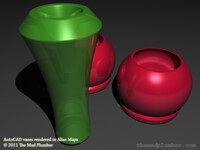
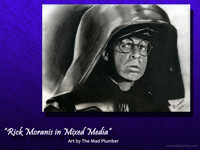
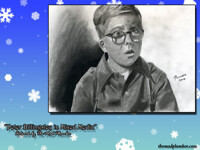
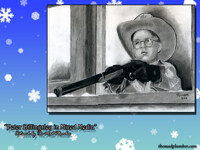


Comments